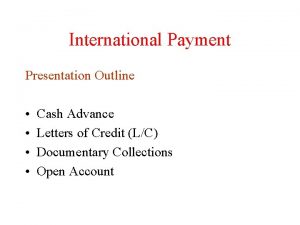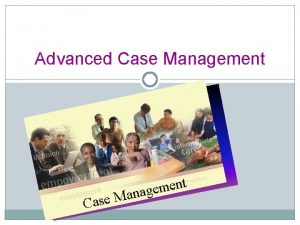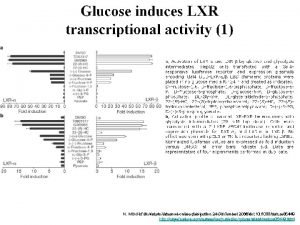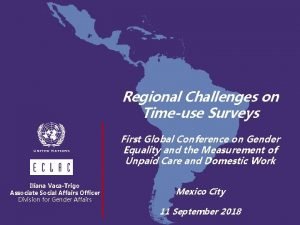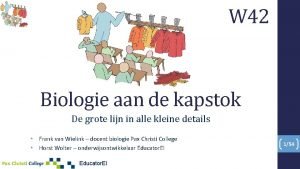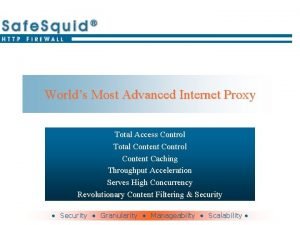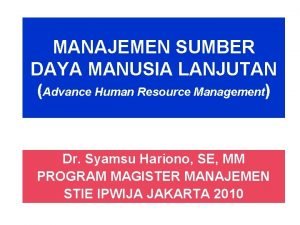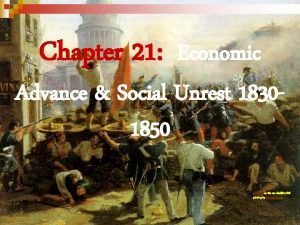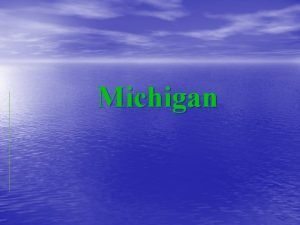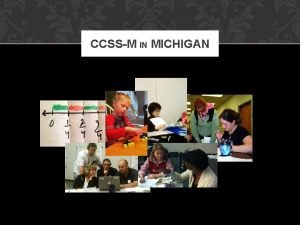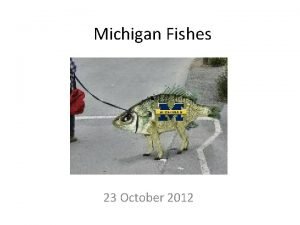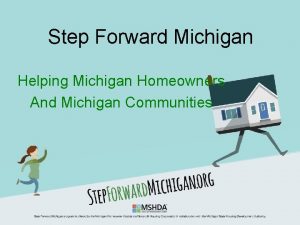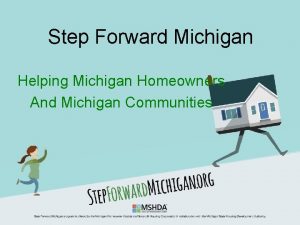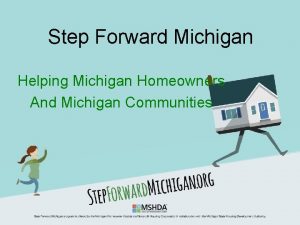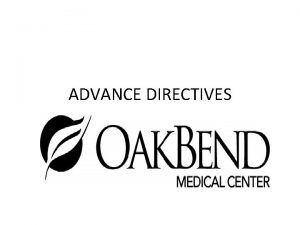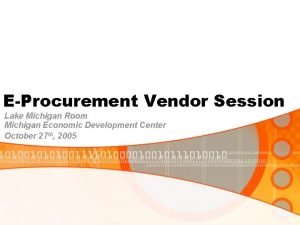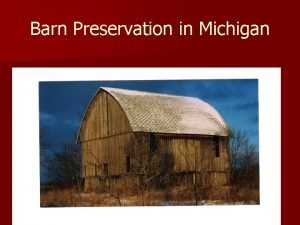What is ADVANCE What is ADVANCE at Michigan











- Slides: 11

What is ADVANCE & What is ADVANCE at Michigan State? § NSF’s ADVANCE Institutional Transformation grant program aims to strengthen the scientific workforce through the increased inclusion of women in STEM. These awards support comprehensive programs for institution-wide change. § Michigan State is one of 37 of ADVANCE’s Institutional Transformation Grant Awardees ($3. 98 M over 5 years). § Provost Kim Wilcox is the Principal Investigator. § § Karen Klomparens, Provost’s Representative Estelle Mc. Groarty, Terry Curry, Tamara Reid Bush, Clare Luz, and Mark Roehling are co-PIs § 3 colleges currently involved (CNS, CSS, CEGR). Plan to expand to 7 additional colleges (CVM, CHM, COM, CN, CAL, CANR, LBS) in 2009/2010. Advancing Diversity through the Alignment of Policies and Practices (ADAPP)

GOAL of and APPROACH to MSU’s ADVANCE program? GOAL APPROACH § To strengthen the scientific workforce through the increased inclusion of women in STEM, and serve as a foundation for advancing MSU’s core values of quality and inclusion. § Align academic human resource (AHR) processes & goals (faculty search, annual review, RP&T, mentoring, leadership) at the unit level with the college & university goals. § Develop evaluation criteria that are consistent, transparent, aligned, and objective and focus on improving quality and inclusivity. Advancing Diversity through the Alignment of Policies and Practices (ADAPP)

Conceptual Model

SUMMARY OF GOALS & APPROACH § Approach supported by theory and a large body of research demonstrating that increasing the structure and alignment of policies and practices will promote a high quality and inclusive workforce (Arthur and Doverspike, 2005; Ericksen & Dyer, 2005; Evans, Puckik, & Barsoux, 2002; Gratton & Truss, 2003). § This project is creating tools NOT rules! § Units, colleges, Provost & academic governance create and modify the “rules” § Tools will be built on best practices & be responsive to collegebased needs (as presented in data collection). Advancing Diversity through the Alignment of Policies and Practices (ADAPP)

Goals stated in ADAPP Proposal • Increase the number of women faculty recruited • Increase the retention of women faculty • Increase the advancement of women faculty • Improve the work climate for all faculty, including women. We will be implementing initiatives to meet these goals and measuring impact.

ADAPP ACTIVITY – YEAR ONE § Senior faculty were identified to help implement tools and work with units. These faculty serve as Faculty Excellence Advocates (FEAs) for the grant. § FEAs worked with grant personnel to collect data via surveys of: o Current practices in departments; and o Faculty perceptions of faculty hiring, evaluation, resource allocation and advancement § Early Findings… o Results of surveys and inventories of current practices reveal that best practices and current policies are not always followed! Advancing Diversity through the Alignment of Policies and Practices (ADAPP)

DATA COLLECTION – A SAMPLING OF RESULTS Results from survey of Chairs/Directors in CSS, CNS, and CEGR indicate that across all three colleges few units are consistently following annual review and RP&T policies or best practices. Approximately: o ½ of the units indicate they do not use a uniform performance appraisal tool o 1/3 of the units do not refer to prior reviews in annual review feedback o ¼ of CNS units indicate that faculty expectations for annual review are clearly stated in writing and readily available to faculty o 1/3 of the responding units do not provide the criteria for evaluation to the authors of the external letters used in the RPT process.

DATA COLLECTION – ADDITIONAL RESULTS Analysis of work environment survey results from faculty in the three colleges shows: • Assessments of annual review and RP & T polices and practices are generally more favorable than the “all MSU colleges average. ” • Significant gender differences in the perceptions of the work environment, (women faculty generally reporting a less positive work environment). • Biggest issue in the annual review and RP & T processes: – Consistency – Uncertainty about criteria being used Analysis of University data shows: o The number and % of women in departments decreases as rank increases (consistent with National Academy Report) o Female faculty in STEM disciplines leave MSU at 2 x the rate compared to men.

ADAPP ACTIVITY IN 2009/2010 § Resource Development o Resource Guides that bring together current MSU policies & best practices, as well as new ideas from other ADVANCE institutions. o On-line Faculty Resource Center (present current policies and best practices for faculty search, annual review, RP&T, mentoring & leadership) § Workshops o Refine existing and develop new workshops based upon college needs reflected in baseline data. § Electronic Faculty Records o Faculty Information Tool Advancing Diversity through the Alignment of Policies and Practices (ADAPP)

Why is this important to you? Why should you care? § Based upon core values of the University (quality & inclusivity) § Will make your work (and that of your faculty) more effective & efficient by improving recruitment, retention, and advancement of faculty in your unit. § Tools will help increase faculty quality, productivity, and retention, as indicated by strategic human resource management research (Schneider, et. al. [2003]). § Just as you do in your own research, we should apply careful, thoughtful, thorough and well documented methods for AHR processes to guarantee quality. § This is a large NSF project, and MSU is a highly NSF-funded campus. We want to be successful in the eyes of NSF. Advancing Diversity through the Alignment of Policies and Practices (ADAPP)

REFERENCES AND CONTACT INFORMATION REFERENCES Arthur, W. , & Doverspike, D. (2005). Achieving diversity and reducing discrimination in the workplace through human resource management practices: Implications for research and theory for staffing, training, and rewarding performance. In Dipboye, R. L. & Colella, A. (Eds. ), Discrimination at Work, pp. 305 -327. Mahwah, New Jersey: Lawrence Earlbaum Associates, Inc. Ericksen, J. , & Dyer, L. (2005). Toward a strategic human resource management model of high reliability organization performance. The International Journal of Human Resource Management, 16(6), 907 -928. Evans, P. , Pucik, V. , Barsoux, J. L. (2002). The global challenge, frameworks for international human resource management. New York: Mc. Graw-Hill Gratton, L. , and Truss, C. (2003). The three-dimensional people strategy: Putting human resources policies into action. Academy of Management Executive, 17(3), 74 -86. Schneider, B. , Godfry, E. G. , Hayes, S. C. , Huang, M. , Lim, B. , Nishii, L. H. , Raver, J. L. , & Ziegert, J. C. (2003). Employee experiences of strategic alignment in a service organization. Organizational Dynamics, 32(2), 122 -141. CONTACT INFORMATION ADAPP-ADVANCE, Office of the Provost, 524 South Kedzie, East Lansing, MI 48824 -1032 517 -353 -8818 adapp@msu. edu , http: //www. adapp-advance. msu. edu
